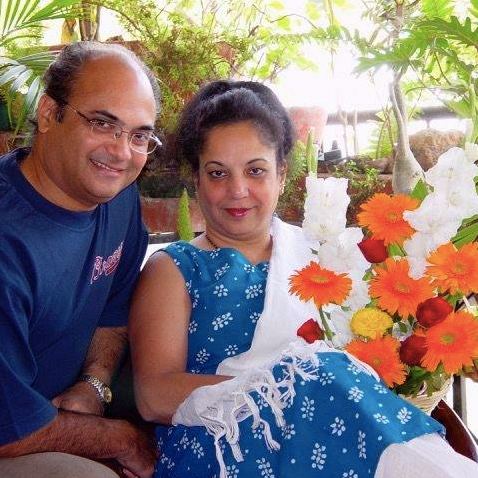My Story

My love for cooking grew from the warmth and care of two remarkable women – my grandmother and my mother. While all my aunts cooked wonderfully, it was the food my grandmother and mother lovingly prepared over the years that left a deep and lasting impression on me.
My grandmother faced life’s challenges with quiet strength. After a bus accident left her with the loss of one arm, she continued to cook every single day – making rotis for 10–15 family members using just one hand. And at the end of it all, she would save a small portion of batter, mix it expertly with spices, and make a special dhirda (a thin savoury pancake) just for me!
My mother, too, shaped my culinary journey. In the 1960s, my forward-thinking father encouraged her to return to college and complete her education after raising three children. She later worked in a bank for many years, balancing career and family with grace. I still remember how, from the time I was in 8th or 9th grade, I would prepare polya (rotis) for my two brothers and father before heading off to school!
When we think of a recipe, the first things that come to mind are ingredients and steps. But over time, I’ve realized that a recipe is made of three essential elements:
1. Choice of ingredients – It’s natural to assume that using the best quality ingredients is enough, but variety matters just as much. For example, when making khichdi, which type of rice should you choose – basmati, kolam, or indrayani? What should be its ideal age? These subtle choices make all the difference.
2. Ratio and proportion – Recipes usually list quantities and suggest adjustments according to taste. Interpreting a recipe to create something delicious requires both experience and intuition. It’s this balance that turns instructions into a memorable dish.
3. Steps or process – Even when steps are clearly laid out, the magic lies in the details. How finely you chop onions, or the precise moment you add vegetables to the tempering—this is where artistry meets science. As the saying goes, God is in the details.
When my older son, Kaustubh, left for the US in 1999, I carefully packed an entire bag of ready-to-cook meals for him. Those meals brought him immense comfort and support during those first few months and years when he missed home, family, and familiar food. Over the years, I continued preparing and sending such meals to friends and family whose children were moving abroad. In 2020, we finally decided to turn this passion into a commercial venture, formalizing the recipes, processes, and ingredients. After a year of rigorous testing—perfecting taste, shelf life, freshness, and convenience—we launched Netra’s Instant Meals in April 2021.
It’s been four years now since we’ve been exporting our products across the world—to countries like the USA, Canada, Singapore, and South Africa. Last year, I personally stood at our stall at the Canton Food Fair and served “Prawn in Malvani Curry” to Chinese visitors!
One of the biggest reasons I focus on recipes like pulao, khichdi, dal, and zunka pithla – meals that are complete and nourishing – is my strong belief in “anti-snacking.” When lunch and dinner are wholesome and satisfying, there’s really no need to snack throughout the day!
However, with today’s fast-paced lifestyle, where everyone wants everything instantly and cooking full meals can be time-consuming, people often turn to instant foods or order from restaurants. And it’s called junk food for a reason – it’s simply not good for the body.
That’s why, with Netra’s ready-to-cook meals requiring no prep work, we’ve tried to bridge this gap—making healthy, homemade-style food available instantly, without compromising on quality or nutrition.
Mornings are no exception—even when people try to eat breakfast before heading out, it’s often rushed and chaotic. In those moments, quick and easy dishes like Netra's suji upma, rice upma, prasad sheera, or moong dal halwa come to the rescue—helping you start the day on a wholesome note without the hassle.
I feel immense joy knowing that Netra’s products are cherished by people from every walk of life—working parents, singles, Indian students living abroad, and senior citizens. We are equally proud to support enterprising entrepreneurs running catering businesses, as well as restaurant owners serving comforting, quick-fix meals to Indian food lovers around the world.
I hope you enjoy exploring the recipes in this book as much as I enjoyed putting them together. May the meals you create bring warmth, happiness, and togetherness to your table!
– Netra Bhalerao
Pune
September 2025







